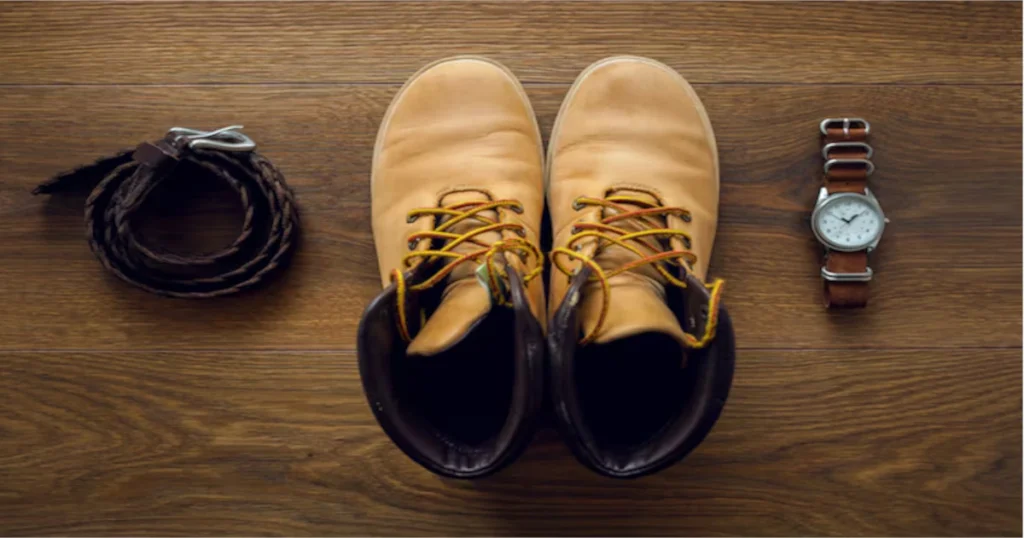The Ultimate Guide to the Best Recommended Work Boots: Top Picks for Safety, Comfort, and Durability in 2024
Work boots are more than just footwear—they’re an essential tool for protecting your feet in hazardous environments. Whether you’re on a construction site, in a factory, or working outdoors in tough conditions, the right pair of work boots can make a significant difference in safety, comfort, and productivity. In this guide, we’ll cover everything you need to know about choosing the best work boots, with detailed recommendations to suit various industries and needs.
Why Choosing the Right Work Boots Matters
Work boots are designed to provide protection against workplace hazards such as falling objects, sharp debris, slippery surfaces, and extreme weather. They also offer support for long hours on your feet, reducing fatigue and preventing injuries. With so many options available, selecting the right pair involves understanding your specific work environment and needs.
Key Features to Consider in Work Boots
1. Safety Toes
- Steel Toe: Offers maximum protection against heavy objects. Ideal for construction, manufacturing, and heavy industries.
- Composite Toe: Made from materials like carbon fiber or Kevlar, offering lightweight protection. Suitable for electricians and cold environments (non-metallic, less conductive).
- Aluminum Toe: Lightweight and thinner than steel toes, providing moderate protection for less hazardous work.
2. Sole Material
- Rubber Outsoles: Known for slip resistance, durability, and chemical resistance.
- PU Outsoles: Lightweight and flexible, good for indoor environments.
- Vibram Soles: High-performance soles for rugged terrains, often used in hiking-style work boots.
3. Waterproofing and Insulation
- Waterproof Membranes: Essential for outdoor work in wet or muddy conditions.
- Insulation: Needed for cold climates to keep feet warm.
4. Comfort Features
- Padded collars, cushioned insoles, and shock-absorbing midsoles enhance comfort.
- Breathable linings help keep feet cool and dry.
5. Durability and Materials
- Full-grain leather: Tough and durable, ideal for demanding environments.
- Synthetic materials: Lightweight and flexible for less rugged conditions.
Top Recommended Work Boots by Category
1. Best Overall Work Boot
Timberland PRO 6-Inch Pit Boss Steel Toe Boot
- Features:
- Steel toe for maximum safety.
- Slip-, oil-, and abrasion-resistant outsole.
- Comfort suspension system reduces foot fatigue.
- Ideal for: Construction workers and general-purpose use.
2. Best for Heavy Industries
Caterpillar Second Shift Steel Toe Boot
- Features:
- Steel toe cap and electrical hazard protection.
- Climasphere lining for moisture management.
- Durable Goodyear welt construction.
- Ideal for: Construction, manufacturing, and industrial settings.
3. Best for Electricians
KEEN Utility Flint II Mid Boot
- Features:
- Composite toe (non-metallic and lightweight).
- EH-rated for electrical hazard protection.
- Cushioned footbed for all-day comfort.
- Ideal for: Electricians and technicians.
4. Best Waterproof Work Boot
Carhartt Men’s Rugged Flex Composite Toe Boot
- Features:
- Storm Defender waterproof membrane.
- Rugged Flex technology for flexibility.
- Composite toe for lightweight protection.
- Ideal for: Outdoor work in wet or muddy conditions.
5. Best for Cold Weather
Wolverine Men’s Marauder Insulated Work Boot
- Features:
- 400g Thinsulate Ultra insulation.
- Waterproof full-grain leather.
- MultiShox comfort system for shock absorption.
- Ideal for: Outdoor winter work.
Choosing Work Boots Based on Industry
Construction
- Must-have features: Steel toes, slip resistance, and puncture-resistant soles.
- Recommended Boot: Thorogood American Heritage Moc Toe Boot
- Comfortable, durable, and stylish with a steel toe option.
Manufacturing
- Must-have features: Oil resistance, toe protection, and arch support.
- Recommended Boot: Dr. Martens Ironbridge Industrial Boot
- Sturdy build with steel toe and water resistance.
Landscaping and Outdoor Work
- Must-have features: Waterproofing, high-traction soles, and breathability.
- Recommended Boot: Irish Setter Wingshooter Waterproof Boot
- Perfect balance of comfort, durability, and water resistance.
Warehouse and Logistics
- Must-have features: Lightweight construction, cushioning, and slip resistance.
- Recommended Boot: Skechers Workshire Peril Steel Toe Boot
- Combines comfort and safety for long hours indoors.
How to Ensure the Perfect Fit
1. Measure Your Feet
- Use a Brannock device or trace your foot on paper to determine your exact size.
- Remember that sizes can vary between brands.
2. Wear Work Socks
- Always try boots with the socks you plan to wear at work.
3. Check for Toe Room
- Ensure there’s enough space for your toes to wiggle without hitting the front.
4. Break Them In
- Wear your new boots for short periods to let the materials mold to your feet.
Maintenance Tips for Longevity
- Clean Regularly: Remove dirt and debris with a soft brush.
- Condition Leather: Use a leather conditioner to prevent cracking.
- Waterproof as Needed: Apply waterproof sprays or wax.
- Replace Insoles: Swap out worn insoles for better support.
- Inspect for Wear: Replace boots with visible damage to ensure safety.
Common Mistakes to Avoid When Buying Work Boots
Purchasing work boots may seem straightforward, but failing to account for critical factors can lead to discomfort, reduced productivity, or even safety risks. To ensure you get the most out of your investment, here’s a detailed look at the common mistakes people make when buying work boots and how to avoid them:
1. Choosing the Wrong Toe Type
The type of protective toe you select can significantly impact your comfort and safety. Steel toes are a popular choice for maximum protection against heavy falling objects, but they can be heavier and less comfortable over extended periods.
- Mistake: Opting for steel toes in environments where they’re unnecessary can add unwanted weight, causing foot fatigue and reducing mobility.
- Solution: Assess your workplace hazards. For lighter tasks or environments where metal-free boots are advantageous, consider composite toes or aluminum toes. Composite toes provide adequate protection while being lighter and non-conductive, making them ideal for electricians or cold environments.
2. Ignoring Arch Support
Arch support is often overlooked when selecting work boots, but it’s a crucial factor for long-term comfort and foot health. Without proper support, you risk developing conditions like plantar fasciitis, flat feet, or chronic foot pain.
- Mistake: Choosing boots with flat insoles or inadequate arch support can lead to discomfort, especially for individuals with high or low arches. Over time, this can result in fatigue or even injuries.
- Solution: Look for work boots that include ergonomic insoles designed for arch support. If you have specific arch needs, invest in custom orthotic insoles or boots that cater to your foot structure.
3. Overlooking Slip Resistance
Slip-resistant soles are essential in many work environments, particularly those involving wet, oily, or uneven surfaces. Failing to prioritize this feature can lead to serious workplace accidents.
- Mistake: Buying boots without checking their slip resistance rating can increase the risk of slips and falls, especially in industries like construction, food service, or manufacturing.
- Solution: Look for boots with rubber or Vibram outsoles, as these materials offer excellent traction. Many manufacturers include slip resistance ratings or certifications, so ensure the boots meet your workplace’s requirements.
4. Skipping Fit Tests
A proper fit is fundamental for both comfort and safety. Boots that are too tight can cause blisters, while loose boots can lead to instability and injuries. Many people purchase boots based solely on size without testing how they feel during movement.
- Mistake: Relying on standard sizes and skipping fit tests often results in discomfort, reduced performance, and potential long-term foot issues. This is especially common when purchasing boots online without trying them on first.
- Solution: Always try on boots with the socks you plan to wear at work. Walk around and check for toe room, heel support, and overall comfort. If buying online, read reviews to gauge the fit and consider brands with easy return policies.
5. Neglecting Durability for Price
In an effort to save money, some buyers opt for inexpensive boots that lack durability. While this may seem cost-effective upfront, low-quality boots wear out quickly, leading to frequent replacements and increased costs over time.
- Mistake: Choosing budget-friendly options without considering material quality, construction, or warranty often results in boots that can’t withstand the demands of your job.
- Solution: Invest in high-quality boots with durable materials like full-grain leather or reinforced stitching. Consider reputable brands that offer warranties, ensuring your boots are a long-term investment.
6. Disregarding Workplace Requirements
Not all work environments are the same, and failing to account for specific workplace requirements can lead to inadequate protection.
- Mistake: Buying boots that don’t meet safety standards, such as ASTM or EH ratings, may leave you unprotected in hazardous conditions.
- Solution: Familiarize yourself with your workplace’s safety regulations and ensure the boots you select comply. For example, if you’re an electrician, composite toe boots with EH ratings are non-negotiable. For outdoor workers, waterproof and insulated boots are crucial.
The Importance of Certifications and Standards
Work boots should comply with safety standards like ASTM International certifications (e.g., ASTM F2413 for protective footwear). These standards ensure your boots provide the necessary protection for your workplace hazards.
Conclusion
Investing in the right pair of work boots is crucial for safety, comfort, and long-term health. By considering your specific needs, workplace requirements, and features like toe protection, waterproofing, and comfort, you can find a pair that meets your demands. Whether you’re in construction, manufacturing, or outdoor work, the recommendations provided in this guide offer a reliable starting point for your search.
Remember, quality work boots aren’t just an expense—they’re an investment in your safety and well-being. Choose wisely and take care of them to ensure they serve you well for years to come!
Frequently Asked Questions (FAQs)
How can I tell if my work boots are properly supporting my feet?
A good pair of boots should feel snug but not tight, with sufficient arch support and cushioning. Look for signs of discomfort like foot pain, blisters, or fatigue, which may indicate poor support or an incorrect fit. Custom insoles can also enhance support if needed.
What is the best way to break in new work boots?
Breaking in new boots involves wearing them for short periods daily and gradually increasing the time. To soften the material, consider applying leather conditioner or using boot stretchers. Avoid wearing them for a full day immediately, as this can cause discomfort or blisters.
Are there lightweight options for protective work boots?
Yes, many brands offer lightweight options with composite toe caps or aluminum toes, which provide ample protection without the added weight of steel toes. These boots are ideal for jobs that require agility and long hours of wear.
How do I maintain my work boots to extend their lifespan?
Clean your boots regularly to remove dirt and debris, condition leather to prevent cracking, and reapply waterproofing treatments when necessary. Additionally, inspect soles and seams periodically to catch wear and tear early.
Can I use orthotic insoles in work boots?
Absolutely! Most work boots accommodate orthotic insoles, which can improve comfort and provide better support for those with specific foot conditions like flat feet or plantar fasciitis. Just ensure the insole doesn’t compromise the fit of the boot.
What should I do if my work environment involves extreme weather conditions?
Choose work boots designed specifically for your climate. For cold weather, insulated boots with moisture-wicking liners are essential. In hot conditions, opt for breathable boots with cooling features to keep your feet dry and comfortable.
READ ALSO: Mornington Tip Hours: Everything You Need to Know







